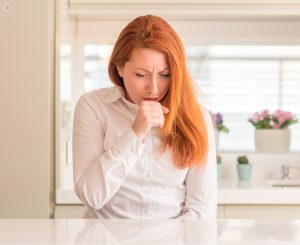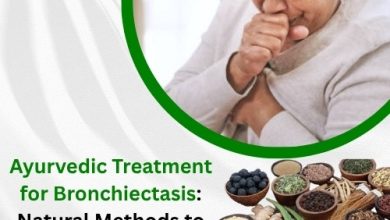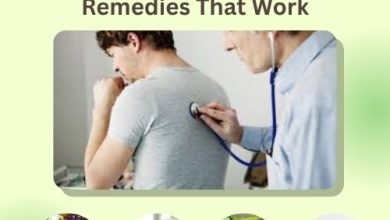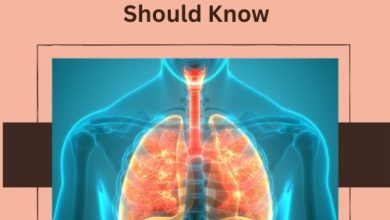Effective Bronchiectasis Treatments That Actually Help You Breathe Easier

Bronchiectasis is a chronic lung condition that affects your airways and makes it harder to clear mucus, often leading to persistent coughs, infections, and breathing difficulties. If you’ve recently been diagnosed or you’re supporting someone who has, understanding how to manage it effectively can make a major difference in quality of life.
Many people ask what is the best treatment for bronchiectasis, but there’s no single answer. Instead, successful management often involves a combination of daily habits, medical therapies, and sometimes surgical intervention. In this article, you’ll find everything you need to know about bronchiectasis treatments and how they work.
What Is the Goal of Treating Bronchiectasis?
The purpose of treating bronchiectasis is to:
- Clear mucus from the lungs
- Prevent chest infections
- Manage symptoms like coughing and breathlessness
- Improve overall lung function
- Reduce flare-ups and hospital visits
By sticking to a consistent treatment plan, many people can control their symptoms and lead active lives.
Related Article: What is Bronchiectasis, and How is It Treated?

Airway Clearance Techniques
Airway clearance is often the first and most important step in treatment for bronchiectasis. These physical methods help remove the thick mucus that builds up in your lungs.
1. Chest Physiotherapy
Also known as airway clearance therapy, this involves:
- Percussion (clapping on the chest)
- Postural drainage (changing body positions to drain mucus)
- Active cycle of breathing techniques (ACBT)
A physiotherapist trained in respiratory care usually teaches you how to do this at home.
2. Positive Expiratory Pressure (PEP) Devices
Devices like the Acapella or Flutter valve create resistance when you exhale, helping to move mucus out of your airways. They’re easy to use and particularly useful for daily routines.
3. Oscillating Devices
These tools combine vibration with airflow resistance. Regular use improves mucus clearance, reduces coughing, and prevents infections from building up.
Related Article: Natural Treatments for Bronchiectasis That Can Support Your Breathing and Wellbeing
Medication Options for Bronchiectasis
If you’re wondering what is the treatment for bronchiectasis from a medical perspective, it usually includes one or more of the following drug therapies:
1. Antibiotics
Infections are common with bronchiectasis, so antibiotics are often needed. These can be:
- Oral antibiotics for minor infections
- Intravenous antibiotics for severe flare-ups
- Inhaled antibiotics like tobramycin or colistin to control persistent infections
Long-term or rotating antibiotics may be prescribed if you have frequent flare-ups or chronic infections with bacteria like Pseudomonas aeruginosa.
2. Bronchodilators
These medications relax the muscles around your airways, making it easier to breathe. They’re particularly helpful if you also have asthma or chronic obstructive pulmonary disease (COPD).
- Short-acting bronchodilators: used when symptoms appear
- Long-acting bronchodilators: taken daily for long-term control
3. Steroids
While not a standard part of bronchiectasis treatment, inhaled corticosteroids may be prescribed if there’s an element of airway inflammation, especially in patients with coexisting asthma or allergic bronchopulmonary aspergillosis (ABPA).
Mucolytics and Hydration
To make mucus less sticky and easier to expel, mucolytics such as carbocisteine or hypertonic saline may be used. Drinking plenty of fluids is also essential for keeping secretions thin and mobile.
If you’ve been exploring various treatments for bronchiectasis, don’t overlook hydration—it’s a simple, powerful way to improve mucus clearance.
Pulmonary Rehabilitation
This structured programme combines exercise, education, and breathing strategies. It’s designed for people with chronic lung conditions and can help improve stamina, reduce breathlessness, and boost overall well-being.
Benefits of pulmonary rehabilitation include:
- Reduced hospital admissions
- Better quality of life
- Increased confidence in managing symptoms
Ask your GP or consultant about a referral if you’re finding day-to-day activities increasingly difficult.
Related Article: Is Bronchiectasis Cough Treatment Different from Regular Cough Treatment?
Vaccinations
Infections can worsen bronchiectasis symptoms and lead to complications. Staying up to date on vaccines is a simple but important step in treatment of bronchiectasis.
Make sure you’ve had:
- The annual flu jab
- Pneumococcal vaccine
- COVID-19 vaccines and boosters
Surgery as a Last Resort
Surgical treatment is rarely needed, but it may be considered if:
- One part of the lung is severely affected
- There’s ongoing bleeding
- Infections aren’t responding to antibiotics
Surgery typically involves removing the damaged portion of the lung (lobectomy). This option is reserved for people whose disease is localised and not widespread across both lungs.
Treating the Underlying Cause
Sometimes bronchiectasis develops as a result of another condition. Identifying and treating that root cause is essential. Common underlying issues include:
- Immunodeficiency disorders
- Allergic bronchopulmonary aspergillosis (ABPA)
- Cystic fibrosis
- Non-tuberculous mycobacterial infection
- Chronic aspiration or reflux
If your doctor hasn’t already explored these, it may be worth asking for further tests. Managing the cause often reduces symptoms and slows down progression.
Related Article: Herbal Treatment for Bronchiectasis: Herbs That Can Improve Lung Function
Lifestyle Changes and Daily Management
Medication alone won’t be enough. Making changes to your lifestyle can greatly support your treatment for bronchiectasis.
1. Quit Smoking
Smoking damages your lungs and reduces your ability to clear mucus. If you smoke, stopping is one of the best things you can do.
2. Stay Active
Gentle, regular exercise improves lung capacity, helps with mucus clearance, and boosts mood.
3. Eat a Balanced Diet
Good nutrition supports your immune system. If you’re underweight or frequently ill, a dietitian can help with meal planning and Herbal Supplement for Bronchiectasis.
4. Monitor Symptoms
Keep a diary of your symptoms, particularly sputum colour, volume, and frequency of coughing. This can help you and your healthcare team spot early signs of infection.
Regular Reviews and Specialist Support
People with moderate to severe bronchiectasis should ideally be under the care of a respiratory consultant. Routine follow-ups might include:
- Lung function tests
- Sputum cultures
- Blood work
- Chest imaging
If you’re wondering what is the best treatment for bronchiectasis, consistency in follow-up and clear communication with your healthcare team are vital.
Related Article: Bronchiectasis Relief can be found in Natural Treatment
Alternative and Supportive Therapies
While mainstream medical care is essential, some people explore complementary treatments to support their recovery. These may include:
- Salt therapy (inhalation of fine salt particles)
- Breathing exercises like Buteyko or yoga-based practices
- Acupuncture for symptom relief (evidence is limited)
Before starting any alternative therapy, always consult your GP or respiratory specialist.
Final Thoughts
Living with bronchiectasis can feel overwhelming at times, but you have multiple options to manage it well. The best approach is often a combination of physical therapies, medications, and daily routines tailored to your needs.
If you’re still exploring treatment bronchiectasis approaches or thinking about what long-term management involves, don’t hesitate to speak to your respiratory nurse or doctor. Timely intervention, good habits, and support can make all the difference.
You might also be interested in reading more about bronchiectasis treatment options, including newer therapies under investigation.




